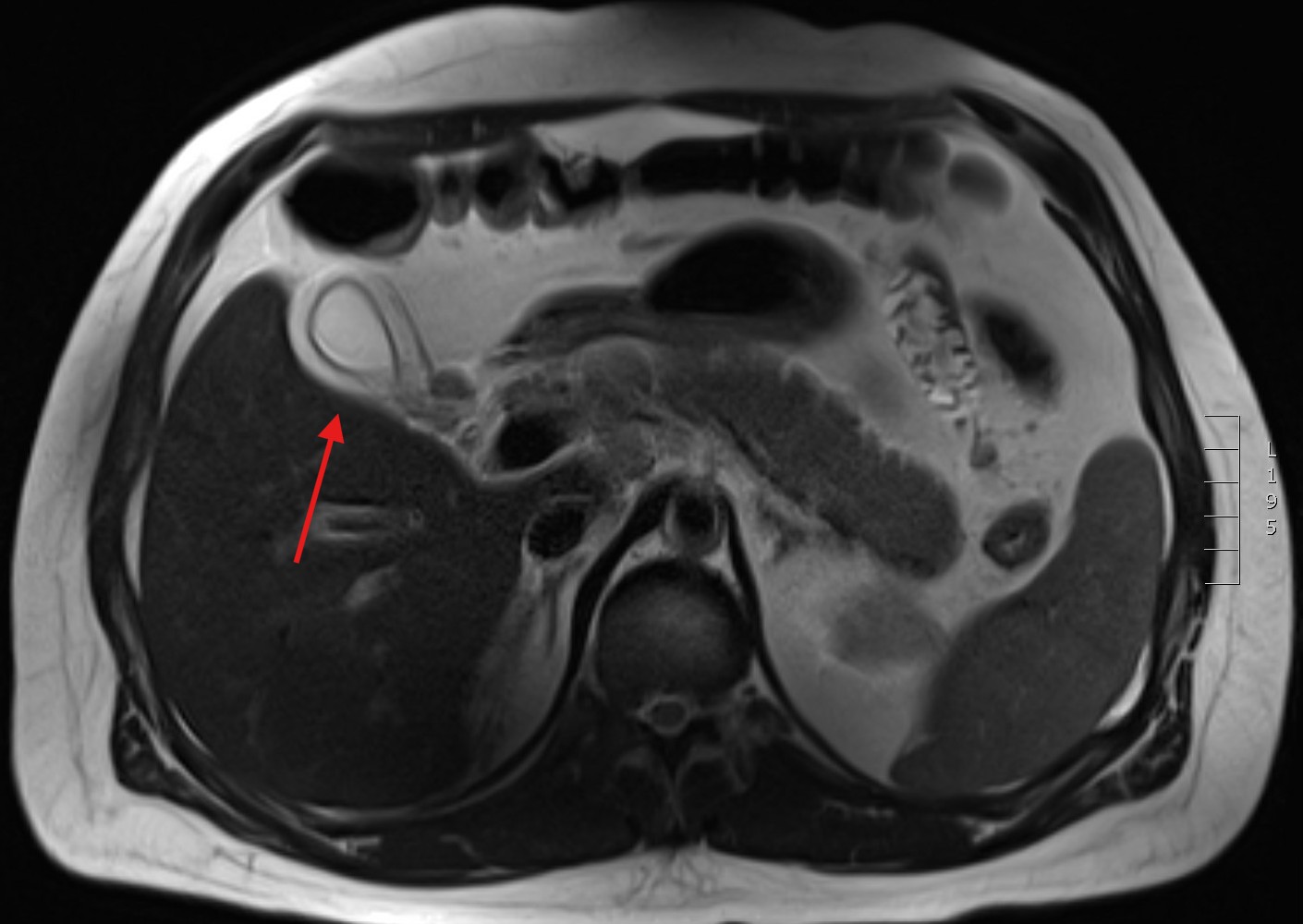Monday Poster Session
Category: Biliary/Pancreas
P2286 - A Rare Cause of Eosinophilic Cholangitis and Rash: A Case Report
Monday, October 27, 2025
10:30 AM - 4:00 PM PDT
Location: Exhibit Hall

Kyle Schneider, MD
Methodist Dallas Medical Center
Dallas, TX
Presenting Author(s)
Kyle Schneider, MD, Colin Ly, DO, Keshav Poddar, MD
Methodist Dallas Medical Center, Dallas, TX
Introduction: Eosinophilic cholangitis (EC) is an extremely rare cause of gallbladder inflammation with an estimated incidence of less than 0.1% of all cholecystectomies. It is typically characterized by eosinophilic infiltration of the gallbladder wall. It is often underrecognized due to its nonspecific clinical presentation and can be associated with eosinophilia, systemic inflammation, and drug reactions.
Case Description/
Methods: We report the case of a 30-year-old male with a history of gout who presented to the emergency department with progressive mid-epigastric abdominal pain and rash. His laboratory workup revealed leukocytosis of 14,000 cells/µL with a prominent eosinophil count of 7,000 cells/µL (49%) and elevated liver enzymes (total bilirubin 3.1mg/dL, AST 364 U/L, ALT 424 U/L, and alkaline phosphatase 379 U/L). Ultrasound showed gallbladder wall thickening, and magnetic resonance cholangiopancreatography suggested an inflammatory process involving the gallbladder and surrounding lymph nodes (Figure 1). A potential drug-induced etiology was considered, as the patient had received an unknown infusion for arthritis shortly before symptom onset. The patient underwent cholecystectomy, with pathology revealing chronic cholecystitis with eosinophilic infiltration in the gallbladder wall and no evidence of gallstones. Postoperatively, he also received IV steroids his eosinophil count decreased, and his rash, liver function tests, and kidney function tests all improved. Histopathologic examination following the cholecystectomy revealed significantly increased eosinophils in the lamina propria of the gallbladder.
Discussion: This case underscores the importance of considering EC in the differential diagnosis of patients with unexplained abdominal pain, eosinophilia, and a history of drug exposure. It can broadly be included in the spectrum of hypereosinophilic conditions but there are no widely accepted criteria for the diagnosis of EC though it is often associated with systemic eosinophilia, gallbladder wall thickening, and histopathologic findings of eosinophilic infiltration, all of which were seen in this case. Surgical intervention is the treatment of choice in such cases. Often, if the disease course is caught early enough, the patient can expect to have excellent outcomes.

Figure: Figure 1: MRCP image demonstrating thickening of gallbladder wall (red arrow)
Disclosures:
Kyle Schneider indicated no relevant financial relationships.
Colin Ly indicated no relevant financial relationships.
Keshav Poddar indicated no relevant financial relationships.
Kyle Schneider, MD, Colin Ly, DO, Keshav Poddar, MD. P2286 - A Rare Cause of Eosinophilic Cholangitis and Rash: A Case Report, ACG 2025 Annual Scientific Meeting Abstracts. Phoenix, AZ: American College of Gastroenterology.
Methodist Dallas Medical Center, Dallas, TX
Introduction: Eosinophilic cholangitis (EC) is an extremely rare cause of gallbladder inflammation with an estimated incidence of less than 0.1% of all cholecystectomies. It is typically characterized by eosinophilic infiltration of the gallbladder wall. It is often underrecognized due to its nonspecific clinical presentation and can be associated with eosinophilia, systemic inflammation, and drug reactions.
Case Description/
Methods: We report the case of a 30-year-old male with a history of gout who presented to the emergency department with progressive mid-epigastric abdominal pain and rash. His laboratory workup revealed leukocytosis of 14,000 cells/µL with a prominent eosinophil count of 7,000 cells/µL (49%) and elevated liver enzymes (total bilirubin 3.1mg/dL, AST 364 U/L, ALT 424 U/L, and alkaline phosphatase 379 U/L). Ultrasound showed gallbladder wall thickening, and magnetic resonance cholangiopancreatography suggested an inflammatory process involving the gallbladder and surrounding lymph nodes (Figure 1). A potential drug-induced etiology was considered, as the patient had received an unknown infusion for arthritis shortly before symptom onset. The patient underwent cholecystectomy, with pathology revealing chronic cholecystitis with eosinophilic infiltration in the gallbladder wall and no evidence of gallstones. Postoperatively, he also received IV steroids his eosinophil count decreased, and his rash, liver function tests, and kidney function tests all improved. Histopathologic examination following the cholecystectomy revealed significantly increased eosinophils in the lamina propria of the gallbladder.
Discussion: This case underscores the importance of considering EC in the differential diagnosis of patients with unexplained abdominal pain, eosinophilia, and a history of drug exposure. It can broadly be included in the spectrum of hypereosinophilic conditions but there are no widely accepted criteria for the diagnosis of EC though it is often associated with systemic eosinophilia, gallbladder wall thickening, and histopathologic findings of eosinophilic infiltration, all of which were seen in this case. Surgical intervention is the treatment of choice in such cases. Often, if the disease course is caught early enough, the patient can expect to have excellent outcomes.

Figure: Figure 1: MRCP image demonstrating thickening of gallbladder wall (red arrow)
Disclosures:
Kyle Schneider indicated no relevant financial relationships.
Colin Ly indicated no relevant financial relationships.
Keshav Poddar indicated no relevant financial relationships.
Kyle Schneider, MD, Colin Ly, DO, Keshav Poddar, MD. P2286 - A Rare Cause of Eosinophilic Cholangitis and Rash: A Case Report, ACG 2025 Annual Scientific Meeting Abstracts. Phoenix, AZ: American College of Gastroenterology.
